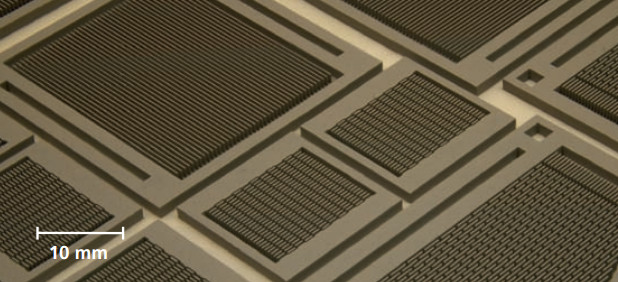Critical to the adoption of additive manufacturing in the aerospace, automotive and defense industries, metal 3D printing is poised to see significant advances in the near future.
This progress can be broken down into a variety of areas, including output volume, quality, repeatability, flexibility and automation. Germany’s Fraunhofer Institute for Manufacturing Technology and Advanced Materials (IFAM) in Dresden has managed to tackle at least a few of these areas with a completely novel metal 3D screen printing system, capable of mass producing small, intricate metal components at rapid speeds.
There are a wide variety of metal 3D printing technologies on the market, usually relying on one of two principals: fusing metal together with a heat source (via laser, electron beam, or arc welding) or joining metal powders together with a binder, before burning out the binder and sintering the metal together. Fraunhofer’s technique falls into this second category.
Rather than jetting the binder across the printbed in a single pass, as occurs with the binder jetting technique used by ExOne and voxeljet, Fraunhofer’s 3D screen printing technique sees a metal-based paste (made up of a given metal and a binder) spread onto the print bed based on the pattern of a computer-generated mask. The “green” layer is then sintered to create a fully dense part before the screen is lifted and the process repeats. To create a complex geometry, however, the screen must then be switched out for a new screen with the next mask for fabricating a subsequent layer. For that reason, prints you see made by this process often resemble extruded 2D images.
Despite the obvious disadvantages related to changing out the screens—and producing those stencils in the first place—3D screen printing has a number of impressive advantages. For instance, using five screens, Fraunhofer IFAM was able to mass produce roughly 3,500 small iron tubes for electrical applications in a single print job on their first generation machine and estimates the ability to make more than 700,000 units per year at that same rate. With a minimum line width of 60 µm and an aspect ratio of more than 100 µm, this technology can achieve fine detail at quick speeds.
Moreover, this process allows for the production of hollow parts, without the need to remove excess powder as with powder bed technologies, making it ideal for the production of molds with unique cooling channels. And, with each pass of the screen, it’s possible to change material part way through, with Fraunhofer already demonstrating this possibility by combining steel and ceramic materials. Other materials that work with the 3D screen printing process so far include iron, copper, titanium, tungsten, lanthanum, molybdenum, aluminum, tantalum, cobalt and nickel. And, because 2D screen printing is a well-established technology, Fraunhofer hopes to carry over existing process control mechanisms to their technique.
Read more at ENGINEERING.com


